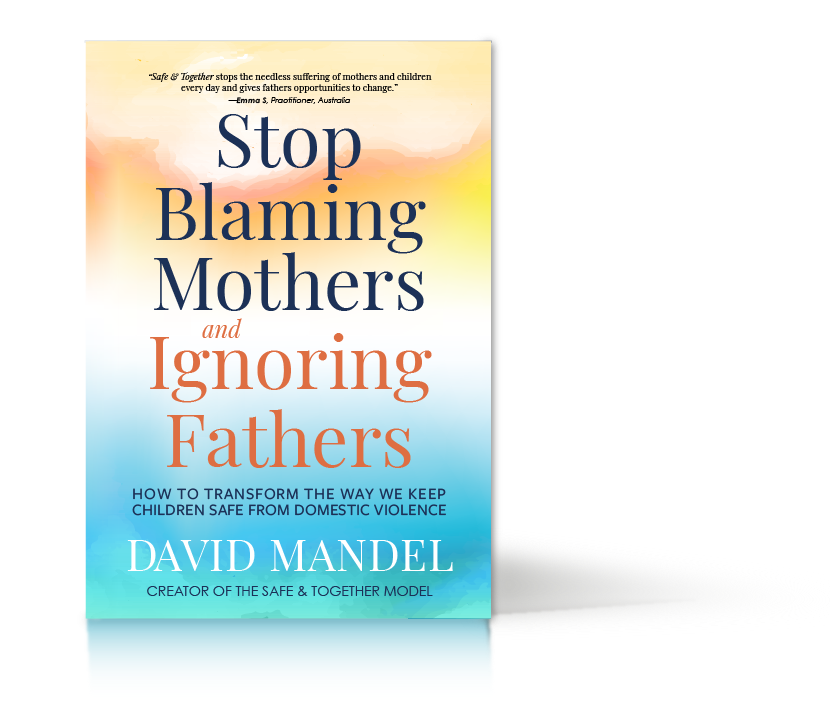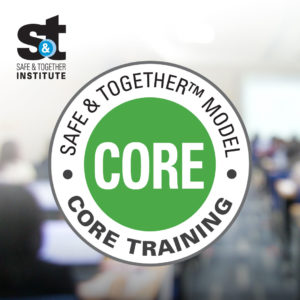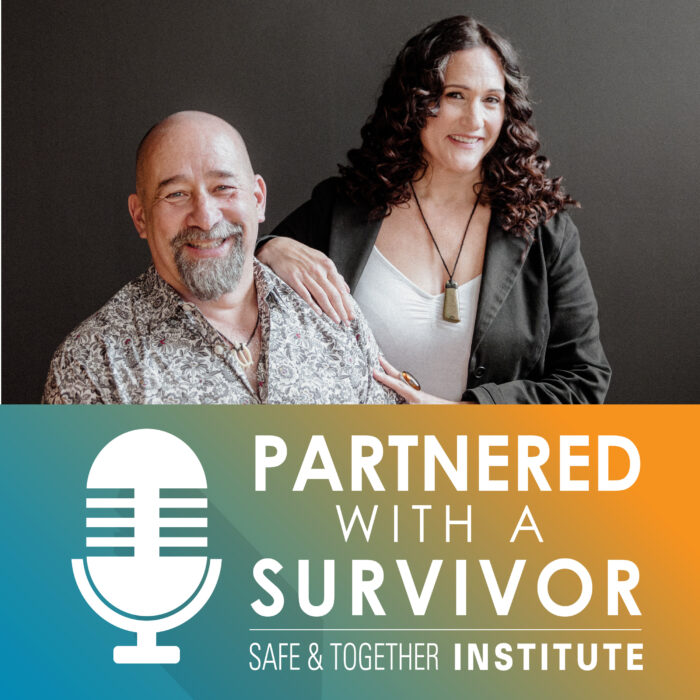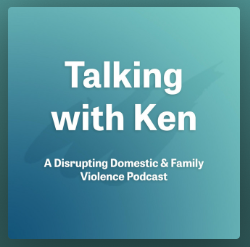Kimly Sills, a 26-year child welfare veteran in Ontario, Canada, has been a passionate Safe & Together advocate since she discovered it seven years ago. Her journey began when she was tasked with supervising a specialized domestic violence protection team, developing the program, and acting as the community liaison to improve relationships between Child Welfare and Violence Against Women sectors. Since that time, she introduced the Safe & Together™ Model to her agency and has grown the practice within by actively using it with every family impacted by domestic violence that she supervises. Kimly has dedicated her child welfare practice to becoming more domestic violence informed by coaching staff, supervisors, members of the legal department, and community partners to implement the Safe & Together™ principles, tools, and skills into their daily practice to improve outcomes for families and cross-system collaboration.
Kimly is bi-lingual and has worked in child welfare as a front-line worker, team supervisor, and program manager. Kimly’s experience as a supervisor/manager includes intake, clinical assessments, ongoing family services, as well as, working with foster families, children/youth in care, and public relations. She has been trained in the Signs of Safety (SOS), strength-based approach and guides staff to increase the implementation of SOS in their child welfare practice. Kimly understands first-hand the similarities and differences between the two models (SOS and S&T) and how they can work together clinically to reach optimum results in child, survivor, and/or worker safety, as well as increased engagement with fathers in a child welfare system.
Kimly also runs her own private practice as a Clinical Social worker providing individual and couples therapy. She specializes in working with individuals impacted by domestic violence, including survivors, family/friends trying to support them, and perpetrators motivated to make better, non-violent/controlling choices.
Rebecca’s journey with the Safe & Together Institute began in 2024. Rebecca brings a solid educational foundation to her role with a Bachelor of Science in Finance and Investments from West Chester University and a Master of Science Degree from Wilmington University. Prior to her tenure at Safe & Together, Rebecca served as the Director of Finance and IT for an entertainment attraction. While finance serves as the cornerstone of her expertise, Rebecca’s journey has ventured into the domains of Information Technology and Human Resources. She has cultivated a well-rounded skill set that uniquely positions her as a catalyst for progress within the Safe & Together Institute. At the heart of Rebecca’s approach lies a commitment to partnership and ensuring that business growth remains intertwined with organizational mission and goals. Her inclusive mindset is at the core of balanced decision-making.
With over 15 years of business operations, strategy, and partnership experience, Kat has led teams and consulted for global organizations, including Amazon, Procter & Gamble, American Express, and Microsoft. She joined S&TI to accelerate the mission and vision by enabling individuals and teams to find more powerful, efficient ways to deliver results for our expanding global community.
Kat’s business expertise spans sales, finance, engineering, product, marketing, HR, legal, and PR. She is an entrepreneur with previous consulting and career coaching business leadership. Kat received her MBA from the Yale School of Management in Sustainability (inclusive of Social Enterprise) and her BFA in Art from New York University.
Christine leads the Finance Team for Safe & Together since her joining in 2023. She has over 20 years of cumulative experience in the areas of finance and business, and change management. Christine is a certified Executive Coach from the Institute of Leadership at United Kingdom. She brings her experience of working in leadership coaching, management training and human resources to her work practice, along with her passion for a mindfulness-based approach. Having qualified in Computer Studies, she also has a wide-ranging experience of technology gained during her tenure in the technology arena.
Jackie Wruck
Jackie Wruck has been a Certified Trainer with the Safe & Together Institute in Australia since 2017 and joins the Safe & Together Institute as the Asia Pacific Regional Manager! Jackie lives in Queensland, AU, and has been working within the community sector for over 20 years. This included working within Government and Non-Government agencies that worked with vulnerable individuals and families in Australia. Jackie has worked in the fields of Child Protection and Domestic Violence as a frontline practitioner in both advocating and crisis support of families. She has also worked in Aboriginal and Torres Strait Islander organisations as a DV Specialist and would consult on cases that involved Aboriginal and Torres Strait Islander families. Jackie has the lived experience, knowledge and understanding of the issue of DFV in the context of Aboriginal and Torres Strait Islander families and was the cultural lead for the Walking With Dad’s program, which is grounded in the Safe & Together Model. Jackie has assisted in bringing both Safe & Together and the Child Protection Child Placement Principles framework together to enhance the lives of Aboriginal and Torres Strait Islander families in Australia to assist in keeping Aboriginal and Torres Strait Islander children out of the Child Protection system. In addition to training on the Safe & Together Model, Jackie continued to use the Safe & Together Model directly with families as a child protection professional, coaching and consulting on cases with domestic violence. She continues to be committed to the safety and well-being of children and families through practice changes through the Safe & Together Model. Jackie will be representing, assisting and supporting Safe & Together Institute in the development and implementation of the model across Australia and Asia Pacific regions.
Donna Dukes
Donna joined the Safe & Together Institute in December 2022 as a Coordinator for the Trainer Certification Program. She comes to us with a combination of both corporate and non-profit experiences. Previously, Donna held training coordinator positions in the financial sector with The Vanguard Group and Training The Street. In the non-profit sector, she was dedicated to community service, both professionally and personally. As the Training Manager for United Way of Central Carolinas, she managed a leadership development program. Volunteering in her spare time, she became an integral part of domestic violence awareness, advocacy and training. Appointed by the City Council and the Board of County Commissioners, she previously served two years as the Chair of the Domestic Violence Advisory Board in Charlotte, NC.
Donna holds a Masters Degree in Health and Human Performance and a Bachelors Degree in Organizational Communications. Donna has received the “Volunteer of The Year” award from United Family Services, a Commendation Award from the chief of the Charlotte Mecklenburg County Police Department and has had several appearances on local television. Academically, she consistently made the Dean’s List; was inducted into Lambda Pi Eta, The National Communication Association Honor Society; and was recognized by the North Carolina State Senate for her academic achievements. With a sense of humor and a lot of inspiration, Donna loves bringing joy and hope to others.
Nicola Douglas
Nicola Douglas has eighteen years of experience in the field of domestic abuse. Her passion for the issue began when she was an undergraduate, volunteering in a homeless hostel and working with women made homeless as they fled abuse. She went on to work as a front-line practitioner in a range of settings, including refuge, outreach (as an Independent Domestic Violence Advisor – IDVA) and Independent Sexual Violence Advisor (ISVA). Nicola’s interest lies in systems change and she moved into strategic roles, successfully implementing programmes to improve domestic abuse outcomes within social care, police and the ambulance service. Nicola spent four years at Standing Together Against Domestic Abuse in the UK, with and alongside partners, to improve the way that systems respond to domestic abuse. This included leading a team of coordinators working in healthcare and child protection settings, as well as developing a health-based accreditation scheme. Most recently, Nicola completed her MA in Criminology and Criminal Justice, achieving a Distinction and award for best dissertation which focused on the impact of the Domestic Abuse Act on strategic partnerships in the UK.
Nicola joins the Safe & Together Institute as the European Training Delivery Specialist, working with the EU Lead.
Kay Stevenson
Coming off of an employment history of managing several small businesses in Connecticut and enjoying the growth and expansion process, Kay is a founding employee of Safe & Together Institute, having started with David in 2006. Now overseeing finance, human resources and technology, Kay balances her commitment to the company’s growth with hobbies of gardening and novel writing.
Mandy Rousselle
Mandy joined the Safe and Together Institute in February 2022 as a bookkeeper. She studied Early Childhood Develop at the University of Maryland European Division in Germany. Prior to working for Safe & Together, Mandy did bookkeeping, customer service coaching, admin support, and managed a transportation charity in Canada for several years.
Janet Penza
Janet joined the Safe & Together Institute in 2022. She has a long history of supporting executives to achieve their goals.
Kim Jurgens
Kim started at Safe & Together Institute in November of 2021. She holds a Diploma in Business (Australia) and Hotel Management (South Africa). She began her working career in South Africa working for a leading hotel chain in Event Management, Food and Beverage. She has lived and worked in South Africa, Australia, Singapore, Oman and the USA and has worked in both the private sector on large-scale events globally – including Hong Kong, Malacca, Zambia, Mozambique, and the USA and then working in a project management capacity for the not-for-profit sector in Australia (Australian Institute of Management). As the Training Delivery Project Administrator, Kim provides logistic support to the UK, USA and AU client leads. She maintains the training calendar, is a point of contact for clients and faculty alike and is responsible for client correspondence
once training dates have been confirmed. Kim has a strong commitment to her community and has volunteered in suicide prevention in Australia and animal welfare in both South Africa and the USA.
Dorothy Striker
Dorothy Striker has over 25 years of professional experience in the field of child welfare and domestic violence. In a career that has spanned frontline casework to policy and program development, Dorothy has been involved in major family violence and differential response initiatives. Her areas of expertise include individual and family assessment, structured decision making and risk assessment, CAPTA related policy, practice model development and quality assurance case reviews. Dorothy has also participated in various levels of all three of the federal Child and Family Services Reviews in Ohio. Certified Safe & Together™ Model Trainer since 2010, she has provided multi-day training and case consultations in the United States, the United Kingdom and Australia.
Casie Burke, MSEd, PC
Casie Burke, MSEd, PC, has been a trainer of the Safe & Together™ Model since 2012. She has experience training and working with child welfare agencies, as well as other community partners who support child welfare agencies (schools, domestic violence advocates, law enforcement, mental health/substance abuse counselors). She has over 10 years of experience working directly in child welfare, holding various positions including intake and assessment, visitation, parent education, and supervisor. Casie has provided consultation services within agencies surrounding the Safe & Together Model to staff, casework staff, and management. She participated in the National Quality Improvement Center on Child Welfare Involved Families Experiencing Domestic Violence Listening Tour, where she could voice the current state of conditions and challenges, and the potential direction for future research, investments and interventions. Casie is committed to providing training and support to professionals working with families and children surrounding the intersection of child welfare and domestic violence.
Beth Ann Morhardt
With over 20 years of experience in the domestic violence field, Beth Ann Morhardt has worked with both child and adult victims/survivors in many roles including Child Advocate, Children’s Community Educator, Adult Advocate, Shelter Services Director and Associate Director. After years of working in direct services Ms. Morhardt transitioned into a consultant role, serving as the Domestic Violence Consultant to Connecticut’s Department of Children & Families. In that role, she was able to build and maintain solid collaborations rooted in mutual respect, which resulted in the growth and development of Domestic Violence-Informed practice and skills to better support victims/survivors of domestic violence and their children. Within this role, working directly with perpetrators of coercive control became a focal point and passion within her work. Since 2016 Beth Ann has been a key member of the Faculty with the Safe & Together Institute, where she traveled throughout the US and internationally, collaborating with child protection workers and other community services professionals to increase their proficiency in Domestic Violence-Informed Case Practice. Currently, she works as the Associate Director at a domestic and family violence agency, overseeing shelter, housing, counseling, education and court advocacy services, while also serving as faculty with Safe & Together Institute. Inspired by the current social climate, Ms. Morhardt has returned to a more independent and multi-purposed career with a broader focus on social & racial justice & personal healing.
Beth Ann Morhardt
With over 20 years of experience in the domestic violence field, Beth Ann Morhardt has worked with both child and adult victims/survivors in many roles including Child Advocate, Children’s Community Educator, Adult Advocate, Shelter Services Director and Associate Director. After years of working in direct services Ms. Morhardt transitioned into a consultant role, serving as the Domestic Violence Consultant to Connecticut’s Department of Children & Families. In that role, she was able to build and maintain solid collaborations rooted in mutual respect, which resulted in the growth and development of Domestic Violence-Informed practice and skills to better support victims/survivors of domestic violence and their children. Within this role, working directly with perpetrators of coercive control became a focal point and passion within her work. Since 2016 Beth Ann has been a key member of the Faculty with the Safe & Together Institute, where she traveled throughout the US and internationally, collaborating with child protection workers and other community services professionals to increase their proficiency in Domestic Violence-Informed Case Practice. Currently, she works as the Associate Director at a domestic and family violence agency, overseeing shelter, housing, counseling, education and court advocacy services, while also serving as faculty with Safe & Together Institute. Inspired by the current social climate, Ms. Morhardt has returned to a more independent and multi-purposed career with a broader focus on social & racial justice & personal healing.
Danielle Martin, MSW
Danielle Martin has more than 20 years of experience working with children and families within child welfare, early childhood development and domestic violence settings. Her work with at-risk children and families has involved direct service provision, management and administration. She initiated her career in the field of domestic violence creating new programming, advocating for additional services and creating improved collaboration at a local level. She served on the Governor’s Task Force in Michigan for the prevention of child sexual abuse as a departmental representative. She has trained the Safe & Together™ Model in Michigan and beyond since 2015. Danielle has a Master’s degree in Social Work with an emphasis on child welfare. Danielle’s focus has been on the provision of trauma-informed care for families and children experiencing child welfare intervention. She has worked closely with community partners to integrate trauma information and practices into schools, mental health, child welfare and residential communities. Danielle has received the Michigan Department of Health and Human Services “best practice award” for her leadership in the development of local child trauma assessment programming.
Sarah L. Heuser
Sarah Heuser, MS, has nearly 25 years of experience working in the domestic and sexual violence field. Her roots are in direct service work with survivors in grassroots service agencies focused on crisis intervention, counseling-advocacy, outreach, support and program development. She also has substantial experience in training, prevention and awareness efforts and has worked with a broad spectrum of groups ranging from high school and college students to athletes, DV advocates, child welfare, law enforcement and the judiciary. Sarah has also served on multiple task forces and workgroups in Michigan to address policy issues. A substantial focus of Sarah’s work has been on the intersection of domestic violence and child welfare. Sarah was a strong early advocate for integrating the Safe & Together™ Model to Michigan and became a certified trainer for the Safe & Together Institute in 2015. Sarah has trained on the Model across the US and in Scotland.
Lisa Fleischer, MSW, LSW
Lisa began her career in child welfare in 2003. She has served in the role of caseworker and supervisor, working long-term with families as well as supervising an Intimate Partner Violence (IPV)/Alternative Response (AR) Unit. Lisa has also been training on the Safe & Together™ Model since 2010.
Lisa previously worked as a Social Worker in an emergency room at a local hospital and a Community Instructor at the Ohio State University College of Social Work. She has a Master of Social Work and is a licensed Social Worker.
Lórien Castelle
Lórien Castelle has been an activist and advocate for social justice focusing on ending gender-based violence for over two decades. She has had the honor of working with several national organizations across the United States including work as a trainer for the National Center on Domestic Violence, a prevention consultant to the National Resource Center on Domestics Violence, a trainer and consultant for Major League Baseball (MLB) and currently for the Safe & Together Institute.
While working as the Director of Prevention for the New York State Coalition Against Domestic Violence, she was responsible for promoting best practices for preventing and responding to domestic violence and coordinating diverse stakeholders to design and implement community, regional and state-level initiatives. She also worked with the Pennsylvanian Coalition Against Domestic Violence to launch a statewide prevention initiative in Pennsylvania.
Ms. Castelle brings a wealth of experience with coaching, support and training to both domestic violence programs and allies. She has specialized experience with community organizing, organizational development and prevention strategies. In addition, Ms. Castelle has served on numerous national, statewide and regional committees and is a much sought-after trainer, meeting facilitator and keynote speaker.
Rhonda Dagg BSc, BSW
Rhonda Dagg has over 20 years of experience working in the child welfare field in a variety of roles including front line worker, supervisor and business analyst. In her current role as a CFS Program and Leading Practice Specialist, Rhonda is a passionate advocate for families affected by domestic violence and a strong supporter of staff who work with these families. She is also the media consultant for federally funded systems change project created to reduce gender-based violence and improve outcomes for children and families.
Rhonda has utilized the Safe & Together™ Model in her work since 2014, writing policies, coaching and mentoring staff and trains internationally for the S&T Institute. In her personal time, she also creates educational material and videos for the community on gender-based violence and prevention.
Kristi Burre, MA
Kristi Burre began her professional career over 22 years ago in local and state government, community partnerships, and system transformation. Most recently, she served as the Director of Children’s Initiatives for Ohio Governor Mike DeWine, focusing on child well-being and driving improvements with communication and coordination across all state agencies providing services to children and families. In this role, she prioritized system enhancements and advancing policy with early childhood education, early intervention and prevention services, maternal and infant health, child physical and mental health, and children services. Kristi has vast experience collaborating with local, state, federal, and private sector partners to align efforts and investments to have the largest possible impact on improving outcomes for children, families, and communities.
Kristi has worked extensively in the child protection and foster care system in the capacities of caseworker, supervisor, manager, and director. In addition to her public service work, she has held various roles teaching, training, and coaching for the last 22 years, to include roles as a social and behavioral sciences adjunct instructor at Columbus State Community College, and a trainer and executive coach with the Ohio Child Welfare Training Program.
Kristi has been a Safe & Together Institute Senior Faculty and certified trainer since 2011 and is committed to guiding child and family serving agencies to become more domestic violence informed. She has trained professionals in North America, Canada, Australia, and the United Kingdom from various disciplines, to include child protection, domestic violence advocacy, law enforcement, education, behavioral health, juvenile justice, health care, and the legal community. She also coaches and mentors professionals from across the world involved with the trainer certification program and observes training sessions for evaluation, feedback, and approval for certification.
Additional leadership roles have included chairing the Ohio Governor’s Children Services Transformation Advisory Council and Eliminating Racial Disparities in Infant Mortality Task Force. Kristi has also held leadership positions and appointments for many other state and local entities committed to protecting children and strengthening families, including the Alcohol, Drug Addiction, and Mental Health Board, Ohio Children’s Trust Fund Regional Prevention Council, Ohio Intimate Partner Violence Collaborative, and Ohio Early Childhood Advisory Council. She holds a bachelor’s degree in sociology, criminology and psychology from Capital University and a master’s degree in sociology from Ohio University.
Ashley Bowers, MSW, LSW
Ashley Bowers, MSW/LSW, has been a Trainer with the Safe & Together Institute since 2012. She facilitates training and consultation services around the Safe & Together™ Model for child welfare professionals. Ashley is a licensed social worker who has worked throughout the child welfare field for over eleven years. She has worked as a Child Welfare Intake Supervisor in both intake and ongoing departments. In addition to training on the Safe & Together Model, Ashley has utilized the Safe & Together Model directly with families as a child welfare professional, coaching and consulting on cases with domestic violence. She continues to be committed to the safety and wellbeing of children and families through practice changes through the Safe & Together Model.
Kari Akins
Kari Akins is the Assistant Deputy Director of the Office of Families and Children at the Ohio Department of Job and Family Services responsible for state level administration and oversight of child and adult protective services. Prior to this position, Kari was appointed to the Office of Children Services Transformation leading children services and foster care efforts in Ohio. With 20 years’ experience in the child welfare system, Kari has served in multiple capacities including screening, intake and assessment for direct service, and community response and outreach at an administrative level. In addition, Kari’s work has emphasized community collaboration and education regarding child maltreatment and trauma, the intersection of domestic violence and child welfare practice, and coaching/supervision in child welfare. In 2010, Kari began her work with the Safe & Together™ Model as part of a pilot county in a statewide rollout of the Model, allowing her to be at the forefront of this practice in her state. Kari has served as an advocate on numerous local and state-level workgroups to address best practice policy around Intimate Partner Violence while providing education and training at the state and national level as Faculty for the Safe & Together Institute.
Alison Simari
Alison joined the Safe & Together Institute in August 2021 as an Administrative Assistant for the Trainer Certification Program. Prior to this, she provided almost a decade of support to the Certified Trainer community at the Center for Nonviolent Communication in Albuquerque, New Mexico. Alison thrives in an environment where she can support the work of those positively impacting the world for the greater good. She is thrilled to be part of Safe & Together’s mission to be an agent of systemic change in the domestic violence field.
Minh-Chau Truong
Minh-Chau has been with the Safe & Together Institute since June of 2021 as the Virtual Academy Customer Experience Specialist. Her time with eLearning in the non-profit sector, with patients experiencing chronic pain and illness, and 15 years of customer service, back her lifelong goal of helping individuals pursue personal sustainability. Her goal at the Institute is to make the online learning process as easy as possible so that learners can focus on what matters most: maintaining themselves and peace at home.
Colleen Jameson
Colleen has 20 years of experience working at the intersection of mental health, domestic violence, and education. She has worked as an educator and advocate in DV shelters, teen safe houses, residential programs for at-risk youth, and programs for adults with disabilities. For the past 10 years, Colleen has worked in rural Mississippi with children and families impacted by mental health. She serves on the inaugural Board of the domestic violence shelter in Oxford, Mississippi. In 2010, she authored a curriculum that was awarded an Iowa Women’s Foundation grant for implementation state-wide. Colleen is passionate about making tools that equip individuals to be agents of positive change in the systems where they work and live.
Lindberg Chambliss
Lindberg joined Safe & Together Institute in June 2021 as Events Logistics Administrator. His professional career includes over fifteen years of experience in live music event coordination and marketing, artist management, and tour logistics. As an activist with a focus on equity for youth and equity through education, he volunteers with the Big Brothers Big Sisters program, and participates in projects that advocate for systemic and equitable policy change in K-12 education. Lindberg is passionate about social justice, personal growth, love, art, and adventure.
Jacob Linzenbold
Jacob Linzenbold has been with the Safe & Together Institute Staff since March, 2021 and currently holds the title of Resource Development, Events & Evaluation Administrator. He works across the organization with each department to ensure that each team is on the same page and best serving survivors and advocates. Jacob graduated from Penn State University and has been involved with several start up companies, giving him the skill set necessary to help with the different aspects of the organization. Jacob excels in providing mentorship and advice to prospective business founders and enjoys teaching students. In his spare time, he enjoys going on adventures and exploring nature with his fiancé and their dog.
Dana Schmersal, MSW – Resource Development Specialist
Dana Schmersal has been involved in child and family policy and programs for nine years, most recently managing Safe & Together trainings for child welfare staff across the state of Ohio. She has worked directly with families impacted by the juvenile justice system, provided training for child support staff working with families impacted by domestic violence, advocated for women’s reproductive rights, and served as communications director for a state and federal child advocacy organization and taught as an adjunct professor for the Interdisciplinary Child Welfare Institute at Capital University Law School. Currently, she is a member of the Institute’s Resource Development Team and coordinates the certified trainer mentoring program. She has completed both Bachelor’s and Master’s degrees in social work as well as a B.A. in criminal justice and has made advocacy for vulnerable populations and improvements in community and system responses the focus of her macro practice.
Peju Thompson
Peju Thompson has been with Safe & Together Institute since July 2020 providing international accounting support for Safe & Together Institute’s business overseas. Peju holds a Bachelor of Arts degree in English Literature from Rutgers University and a Master of Science Degree in Accounting from Fairleigh Dickinson University. Prior to working for Safe & Together, Peju was a staff accountant for both a mid-size CPA firm and in city-government. In addition to her diverse professional experience, she enjoys working with people and endeavors to always positively impact others.
Leah K. Vejzović, LMSW
Leah has been working as a social worker in the fields of child welfare and domestic violence victim advocacy since 2007. She has experience as a child welfare services provider, a domestic and sexual assault victim advocate, a therapist specializing in work with adult and child survivors and perpetrators, a men’s behavior change program facilitator and the coordinator of domestic violence training and response for the Department of Human Services in Iowa. Leah first became connected to the Safe & Together Institute during her tenure as state coordinator when she helped facilitate the implementation of the Safe & Together Model across the state. She came on board in 2020 as a Resource Development Specialist, creating DV-informed curriculum, eLearning and practice tools. She also worked to coordinate programming for our Events. Leah is passionate about equipping professionals with the tools they need to do effective work with families and engage in larger agency and systems change.
Ingryd Flores
Ingryd commenced her tenure at the Safe & Together Institute in June 2019. With a background in Social Behavioral Science, she furthered her education by obtaining a Bachelor’s degree in English with a minor in History from the University of California, Irvine. Proficient in Spanish, she possesses fluent speaking, writing, and reading skills in the language.
Her professional journey commenced at the National Association of Latino Elected and Appointed Officials (NALEO), where she contributed to a national leadership program aimed at supporting and training Latino elected and appointed officials on pertinent issues. Here, she developed a passion for empowering the Latino community towards naturalization and active civic engagement. Concurrently pursuing her education, she earned a Paralegal diploma and subsequently served in roles focused on Criminal and Immigration Law, conducting comprehensive research on various legal matters.
Ingryd’s conviction in the transformative power of education is evident in her role as a Per Diem Substitute Teacher, where she fosters a positive learning atmosphere and nurtures students’ desire for knowledge.
Currently serving as the TCP and Technology Administrator, Ingryd delivers top-tier technological support, demonstrating adeptness in managing event registrations and facilitating pre- and post-event evaluations with finesse. She prioritizes effective communication with learners and participants, ensuring their comfort and engagement throughout online courses and event proceedings.
Shelly Napoletano Flynn, MSW
Shelly Napoletano Flynn, MSW began at Safe & Together Institute in July 2018 as the Trainer Certification Program Manager overseeing the Institute’s Certified Trainer Expansion. Shelly’s professional career includes over twenty years of experience in the field of child welfare with a dual focus on direct practice with children and families and systems-level social work practice. With the focus on children birth through age eight and their families, her career included direct service, case management and administration which included intersections with statutory child protection, juvenile and family courts, mental health, substance abuse, domestic violence, and local crisis response teams.
Shelly’s experience in systems-level practice involved projects such as the evaluation and development of a community’s local capacity to holistically serve its at-risk population of children and families. Additionally, she evaluated and reported on the state-wide supervision practices of Connecticut Certified School Social Workers. As a result of this research, Shelly served on the State of Connecticut Department of Education’s Task Force to develop and implement properly aligned and discipline-specific evaluation standards for school-based social workers in the State of Connecticut. Additionally, her work in systems practice led to the honor of being invited to present on local capacity development of a Birth through Age Eight Children and Family Initiative to the Administration for Children and Families (ACF), a division of the U.S. Department of Health & Human Services in Washington DC.
Anna Mitchell, Safe & Together United Kingdom Lead
Anna Mitchell’s interest in women’s issues began when she studied a degree in Geography with Gender Studies at Edinburgh University in 1996. After working in various women’s organisations she went on to gain her Social Work Masters and began to think about the importance of engaging with men who abuse in order to increase the safety of women and children. She worked as a Women’s Service Worker with the Caledonian System; an integrated approach to addressing domestic abuse combining a court-ordered programme for men, aimed at changing their behaviour, with support services for women and children. Anna co-authored the Caledonian System Women’s Service Manual and was seconded to the Equality Unit in the Scottish Government as a Professional Advisor to support the roll-out of this innovative system across Scotland. Since 2012, she has been employed as Domestic Abuse Lead Officer for Edinburgh’s Public Protection Partnership with the remit to help coordinate domestic abuse services across the council, police, health and the voluntary sector. Anna has completed a Postgraduate Diploma in Public Services Leadership and led a number of initiatives in Edinburgh to improve systemic responses, not only to adult and child victims but to domestic abuse perpetrators; including the development of auditing tools, improvement plans, service pathways, policies and training. In her current role, she is representing the Safe & Together Institute in the UK and is supporting the development and implementation of the Model across Great Britain.
Ruth Reymundo Mandel, Communications and E-Learning Manager
Ruth has been in training and implementation since 1995. Her career began as a middle school teacher in post-revolutionary Nicaragua. As a teacher in a developing, post-war country she became dedicated to issues surrounding social justice and violence. She later transitioned to higher education and worked at the Bryman School and at The Art Institute of Phoenix as an Assistant Director of Admissions. Her responsibilities included vetting prospective students and identifying barriers to enrollment and to matriculation.
After taking a break to raise her three children, she began working as a trainer and technical support for a national professional line nutritional company and an international professional line herbal company which trained medical professionals in alternative therapies.
In her role, she trained doctors and medical professionals in clinical application and was an ongoing support for successful implementation through patient outcomes. She developed systems for practice management, patient support, managed, created and promoted cyclical education events for clinical success. She developed training strategies to respond to a variety of real-time field challenges.
Ruth also worked as a professional business coach specializing in systems and practice management. Her dedication to understanding root challenges, institutional, structural and personal impediments that keep people from applying their skills and knowledge in a targeted and successful way helped many of her clients increase their business success.
Aside from her professional accomplishments, Ruth is a published poet, writer and public speaker. Ruth has worked with clients using various energy medicine and body-centric coaching techniques for trauma recovery. Drawing on her childhood experiences growing up in an abusive, religious cult and as a survivor, she is a fierce advocate for those who have experienced abuse. She is dedicated to helping survivors and allies understand behavioral coping mechanisms arising out of trauma and mitigating societal and personal judgments surrounding common human responses to violence and harm. This transformative approach helps those who have experienced violence and their allies better understand how to support, nurture and nourish survivors in a common-sense manner and without blame.
Brittany DiBella, MSW, DVS
Brittany DiBella has been with the Safe & Together Institute since 2015. Brittany has extensive experience developing curricula, e-learning content, and resources, as well as with providing consultation and training facilitation on the Safe & Together™ Model for a wide range of family-serving professionals. Brittany has over 10 years of experience in the field of domestic violence work including research and evaluation of New Jersey’s co-located advocate program; educating advocates, child welfare professionals and social work students on issues related to violence against women and children; direct-practice experience with survivors of trauma and interpersonal violence and work with adolescents impacted by violence. Brittany also served on New Jersey’s Child Fatality Review Board in 2017, is certified in Violence Against Women & Children from Rutgers University School of Social Work and is certified in New Jersey as a Domestic Violence Specialist.
Heidi Rankin, MPA – Associate Director
Heidi has over 30 years of experience in the sexual and domestic violence fields and social justice. She has worked in crisis counseling, program and policy development and advocacy in both the United States and Canada. Heidi received a Master’s in Public Administration with a concentration in domestic violence from the University of Colorado at Denver, the only program of its kind in the country. In her current role as Associate Director and North American Lead, she helps agencies navigate plans for systems change and supports efforts to build capacity through training and collaboration. Heidi also oversees the Institute training staff, faculty and mentors, manages training for Certified Trainers and presents nationally and internationally.
David Mandel, MA, LPC – Executive Director
With over 35 years of experience in the domestic violence and child welfare fields, David is the creator of the Safe & Together Model, a transformational approach to changing how systems and practitioners respond to domestic violence when children are involved. He has identified how a perpetrator pattern-based approach can improve the ability to partner with survivors, intervene with perpetrators as parents, and improve outcomes for children.
David is the founder of the Safe & Together Institute, which works with governments and NGOs across the globe, including Canada, the US, Australia, New Zealand, Singapore, Japan, the United Kingdom, and Europe. Through their live training, organizational consulting, e-learning, and trainer certification, the Safe & Together Institute provides organizations and systems with a wide range of practice change tools. Currently, the Institute supports almost 300 Certified Trainers and 80 Partner Agencies worldwide. The Model has proven its relevance to multiple sectors, including family court, substance use, law enforcement, mental health, multi-agency efforts, and other disciplines.
David has written or co-written numerous journal articles, book chapters, and white papers, including his most recent one on the alignment of the Safe & Together Model with the children’s best interest framework. The Institute’s work is regularly the subject of research studies, including a current project examining the relevance of the Model in a First Nation context in Australia. He has just published his first book, “Stop Blaming Mothers and Ignoring Fathers: How to Transform the Way We Keep Children Safe from Domestic Violence,” which is available online through Amazon.com.
journal articles on batterer’s perceptions of their children’s exposure to domestic violence, domestic violence case reading tools, and the intersection of domestic violence and child welfare practice. His chapter on “Batterers and the Lives of Their Children” was published in the Praeger Series Violence Against Women in Families and Relationships.

















